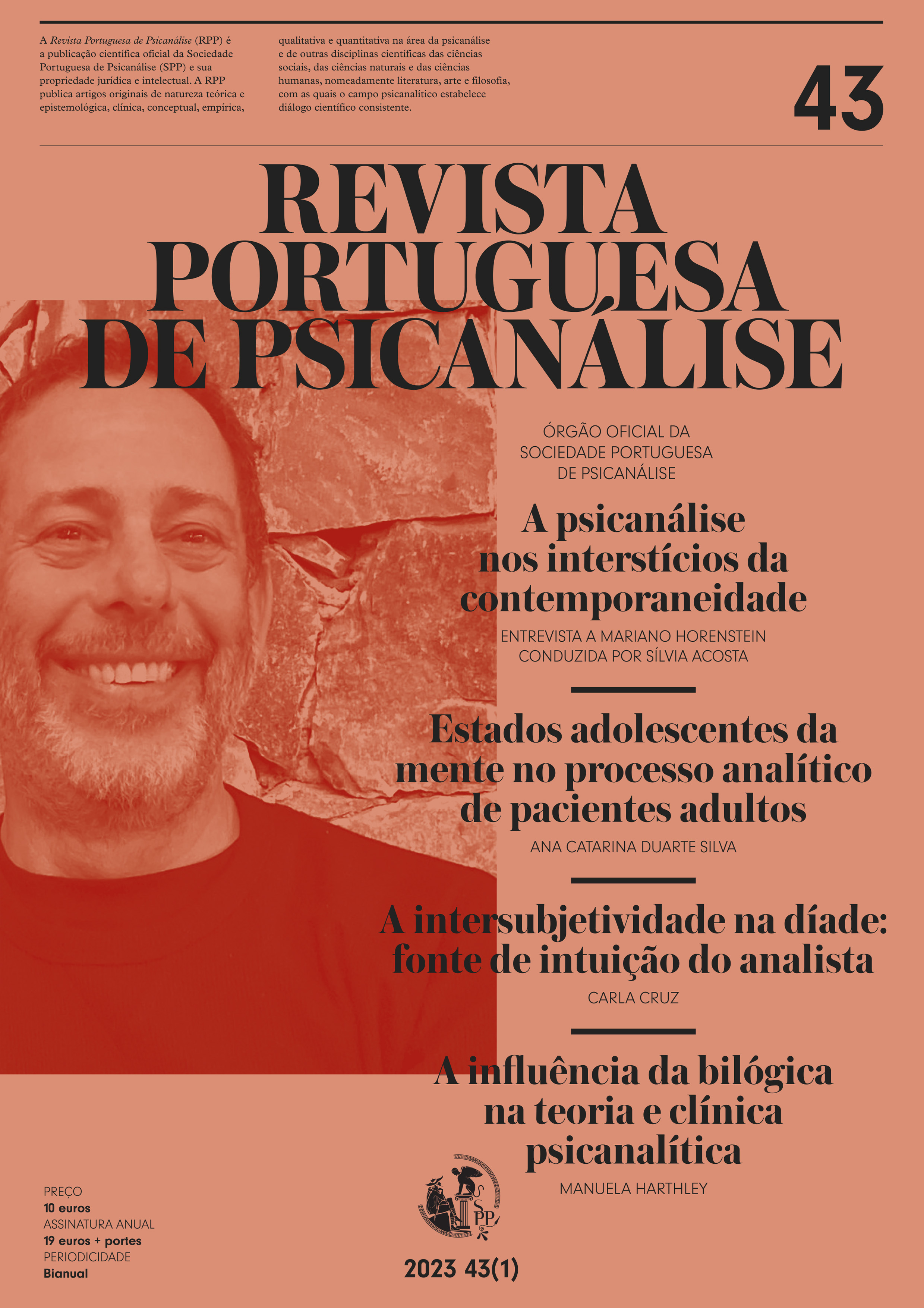A influência da bilógica na teoria e clínica psicanalítica

Abstract
The influence of bi-logic on psychoanalytic theory and clinic
Psychoanalytic thought, affiliated with Freud, Melanie Klein and Bion, develops by integrating the concepts of bi-logic into the structure of the psychoanalytic edifice. The conception of the unconscious, the discovery of the characteristics of the unconscious system, is the most creative and fundamental discovery of Freudian thought, with profound implications for psychoanalysis and other fields of knowledge. From the “Realm of the Illogical”, mathematical laws and principles allow the construction of a model for reading the unconscious — the bi-logic.The laws of unconscious processes, attributing logic to it, allow us to place it in the realm of the multidimensional, providing a better reading, a more precise dialogue, and a clearer practice of psychoanalysis. Language is not the only element of interpretation. We communicate, at deeper levels, closer to the essence of Being.The article, in the aforementioned context, will provide a summary of the fundamental ideas of bi-logic; its influence on contemporary psychoanalytic thought and its clinical implications.
Keywords
Bi-logic, Strata, Unconscious, Symmetry
Author Biography
Manuela Harthley
Manuela Harthley é matemática e psicanalista titular da Socidade Portuguesa de Psicanálise (SPP), da Associação Psicanalítica Internacional (IPA) e da European Psychoanalytical Federation (EPF). É presidente da Comissão de Ética da SPP.
References
- Bion, W. R. (1990). A Memoir of the Future — (I) The Dream. Karnac Books.
- Borges, J. L. (1988). Aleph. Estampa.
- Freud, S. (1959) The Interpretation of Dreams. Em The Standard Edition of the Complete Psychological Words of Sigmund Freud (vol. iv, pp. 626–686). Hogarth Press. (Original publicado em 1900.)
- Freud, S. (1959) The Uncounscious. Em The Standard Edition of the Complete Psychological Words of Sigmund Freud (vol. xiv, pp. 159–190). Hogarth Press. (Original publicado em 1915.)
- Freud, S. (1959). Some Elementary Lessons in Psycho-Analysis. Em The Standard Edition of the Complete Psychological Words of Sigmund Freud (vol. xxiii, pp. 279–286). Hogarth Press. (Original publicado em 1938.)
- Grotstein, J. S. (1994). Projective Identification and Countertransference: A Brief Commentary on their Relationship. Contemporary Psychoanalysis, 30, 578–592.
- Hélder, H. (1981). Poesia Toda. Assírio e Alvim. Matte Blanco, I. (1981). Reflexionando con Bion. Revista Chilena de Psicoanálisis, 3, 8–41.
- Matte Blanco, I. (1988). Thinking, Feeling and Being: Clinical Reflections on the Fundamental Antinomy of Human Beings andWorld. Routledge.
- Mondrzak, V. S. (2004). Psychoanalytic process and thought: Convergence of Bion and Matte-Blanco. The International Journal of Psychoanalysis, 85, 597–614.
- Salgueiro, E. G. (1991). Espaço psíquico y function analizante: la estrutura del inconsciente y los encasamientos de la Virgem del paraíso. Anuário Ibérico de Psicoanálisis, II, 157–172.
- Sanchez Cardenas, M. (2011). Matte Blanco’s thought and Epistemological Pluralism in Psychoanalysis. The International Journal of Psychoanalysis, 92, 811–831.